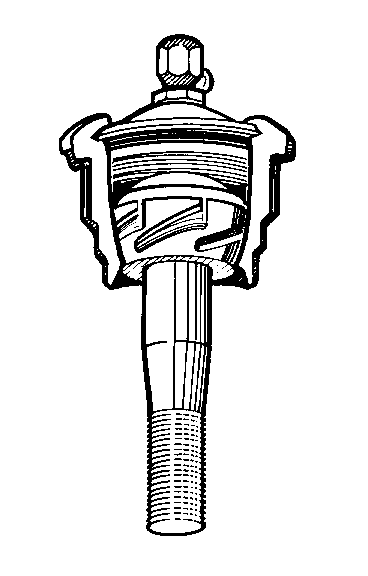REAR SUSPENSION NOISE (GREASE BALL JOINT)

MODELS AFFECTED: 1989-1990 DE VILLES AND FLEETWOODS
Some 1989-1990 DeVilles and Fleetwoods may experience a "thump", "clunk", or "pop" noise from the rear suspension or trunk areas when driving over small bumps and around corners (i.e., washboard road surfaces, railroad tracks, etc.). This noise may be more pronounced at low mileage and in hot ambient temperatures (greater than 80 DEG F) with high humidity. The noise may be reproduced on smooth surfaces by driving the car in "figure eights".
If this condition is encountered, first inspect the rear suspension components and fasteners for proper installation and that they are tightened to torque specifications. Check the Electronic Level Control (ELC) system for proper operation. Ensure that the trunk lid hinges are not contacting the strut towers. Reposition hinge(s) away from strut tower to provide clearance between hinge and tower if contact is evident (paint rubbed through). If all suspension components are properly installed, ELC system is operating correctly, and the trunk hinges are not contacting the strut towers use the following procedure:
1. Grease both rear ball joints and tie rod ends.
2. Jounce car such that the rear ball joints and tie rod ends will move.
3. Re-grease both rear ball joints and tie rod ends.
4. Evaluate car for noise.
If noise is still present (even though it may be reduced), use the following procedure:
1. On the side of the car that the noise is coming from, separate the rear control arm from the knuckle at the ball joint using the removal and installation procedures in Section 3D of the Service Information Manual.
2. Grease the ball joint through zirk fitting while rotating the ball joint stud.
3. Reassemble control arm to knuckle.
WARRANTY INFORMATION VEHICLE SERIES Operation Operation Description Number C D E J K V
Ball Joints, Control Arm Lube (Both) T6393 .3 Ball Joint, Separate and Lube Stud (Each) T6394 .8

General Motors bulletins are intended for use by professional technicians, not a "do-it-yourselfer". They are written to inform those technicians of conditions that may occur on some vehicles, or to provide information that could assist in the proper service of a vehicle. Properly trained technicians have the equipment, tools, safety instructions and know-how to do a job properly and safely. If a condition is described, do not assume that the bulletin applies to your vehicle, or that your vehicle will have that condition. See a General Motors dealer servicing your brand of General Motors vehicle for information on whether your vehicle may benefit from the information.
